About
OLFi
Bio-olfactory interaction design
March, 2021
March, 2021
For the Biodesign Challenge 2021
Team:
Alex Widua
Cornelia Hulling
Yanyi Lu
Alex Widua
Cornelia Hulling
Yanyi Lu
Timeframe:
4 weeks
4 weeks
My main contributions:
> Desktop research
> Concept formulation
> Bio-plastics material development
> Workshops and user research
> Movie: storyboard, script and editing
> Packaging graphic design
> Desktop research
> Concept formulation
> Bio-plastics material development
> Workshops and user research
> Movie: storyboard, script and editing
> Packaging graphic design
TOOLS:
> Bioplastics prototyping
> Adobe CC - Premiere and Audition
> Miro
> Bioplastics prototyping
> Adobe CC - Premiere and Audition
> Miro
Speculative design
A speculative bio-design concept based on the development of genetically engineered microbes, able to produce different naturally occurring scents.
Using provocative material expressions
Novel material expressions can be a tool to start conversations, and spark the imagination of both collabors and potential users. Something that is especially useful for exploring future possibilities for interaction design.
Design
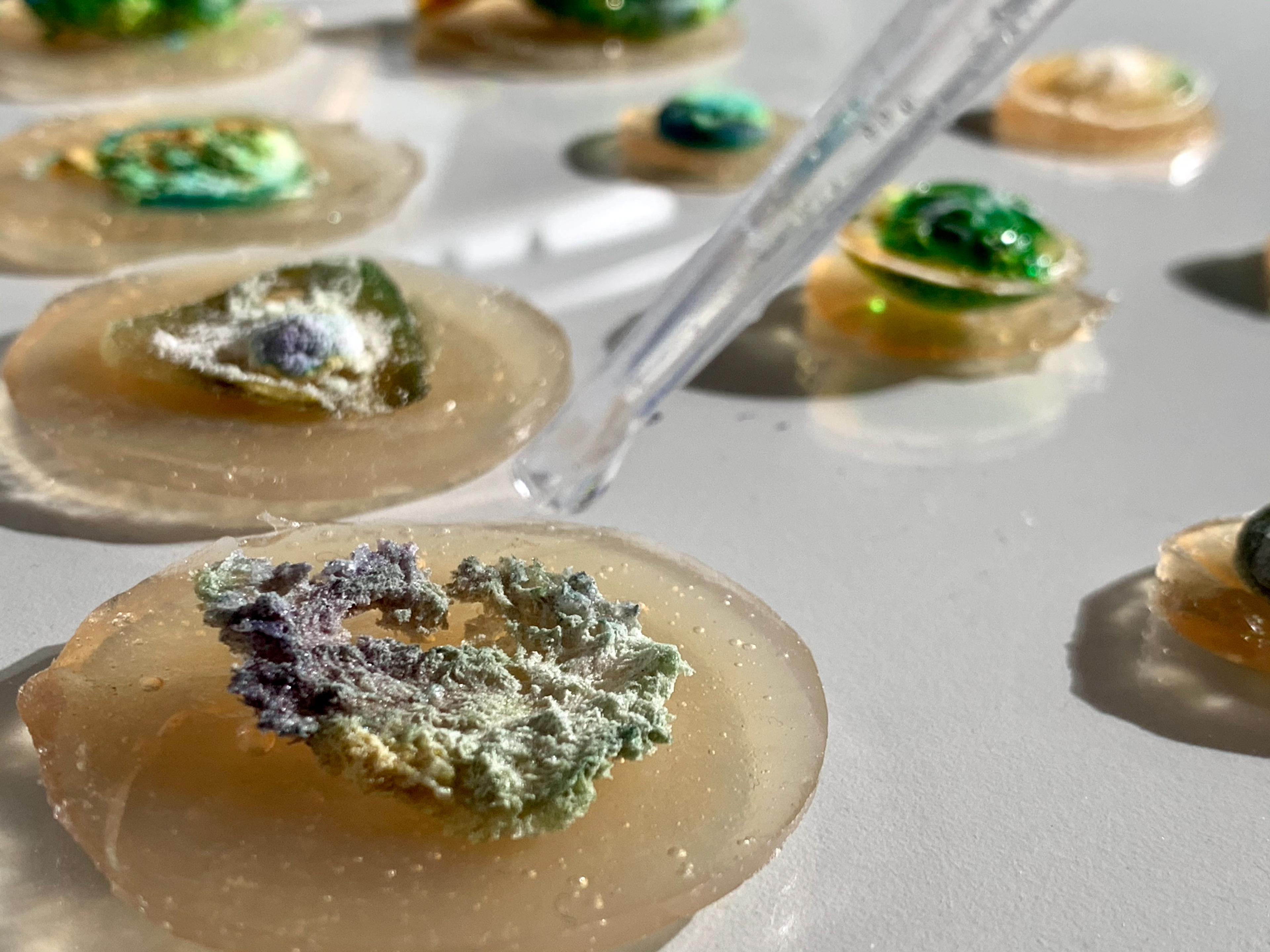



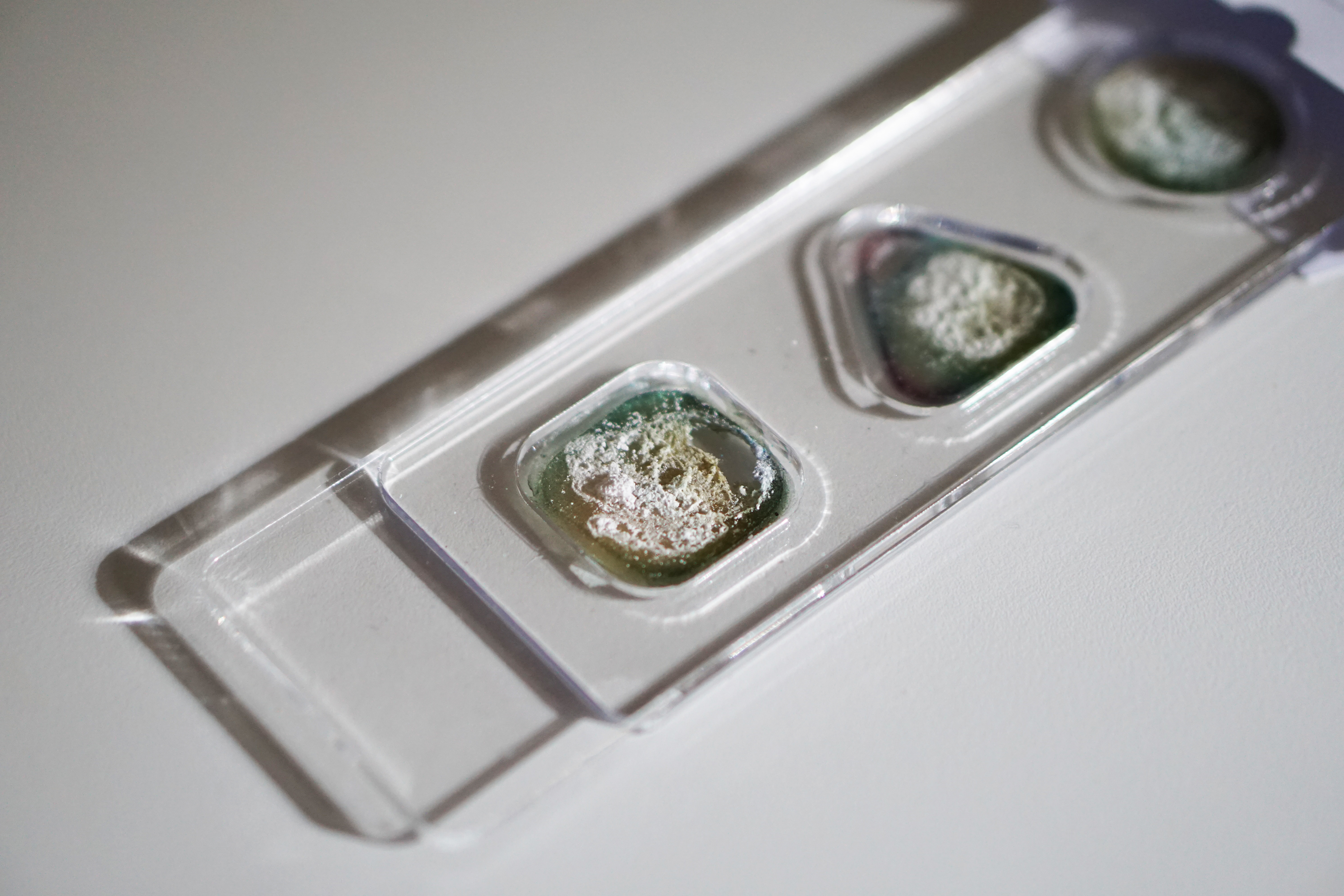

Concept video. Main contributions: Storyboard, script, acting, and editing.
Closing the sensory gap
Expanding our relationship with smart devices
While smart devices have many ways of sensing us and our behaviour, we can hardly sense theirs.
With OLFi, our devices are given a body odour microbiome - closing the sensory gap and giving smart devices a stronger physical presence in our lives.
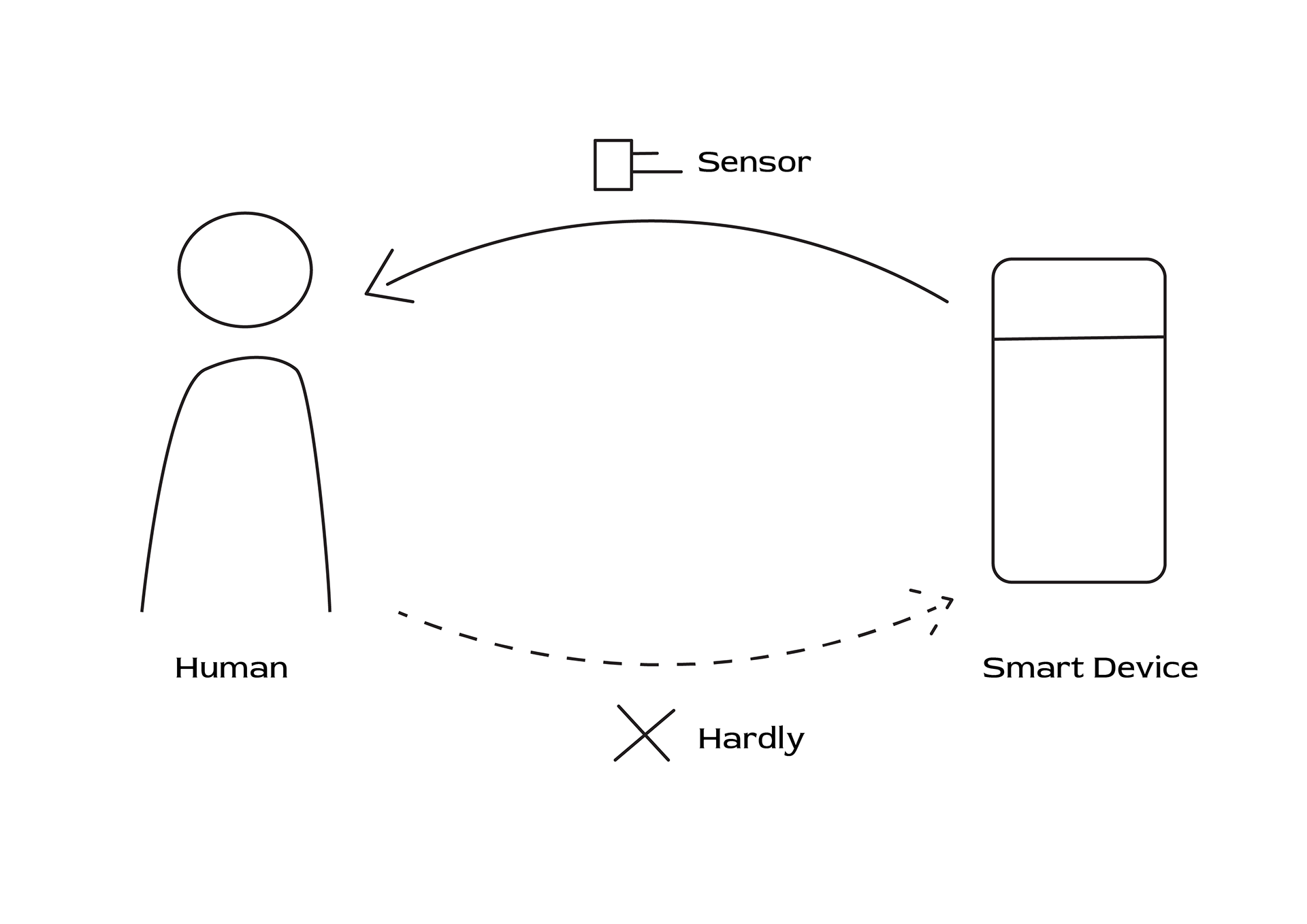
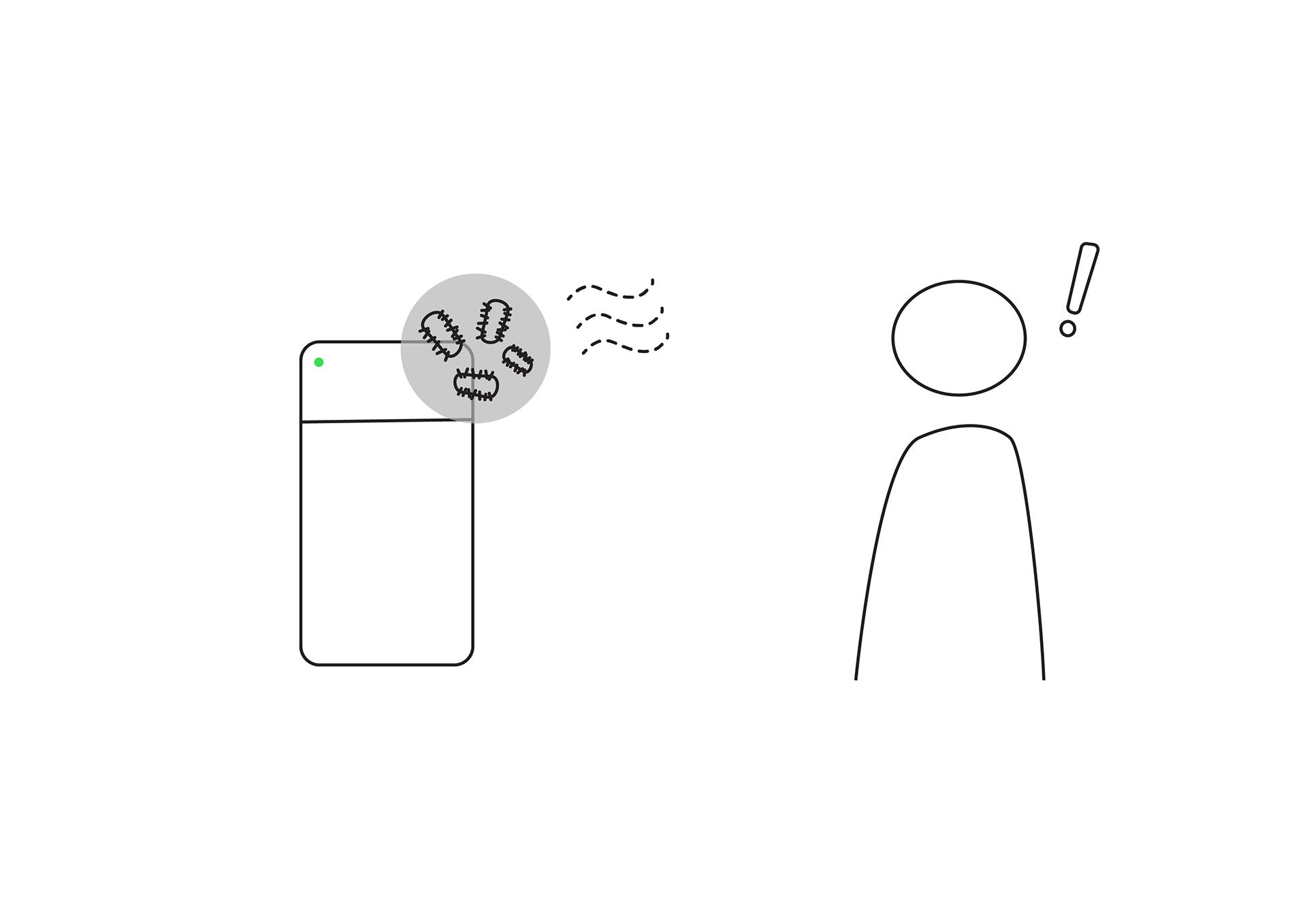
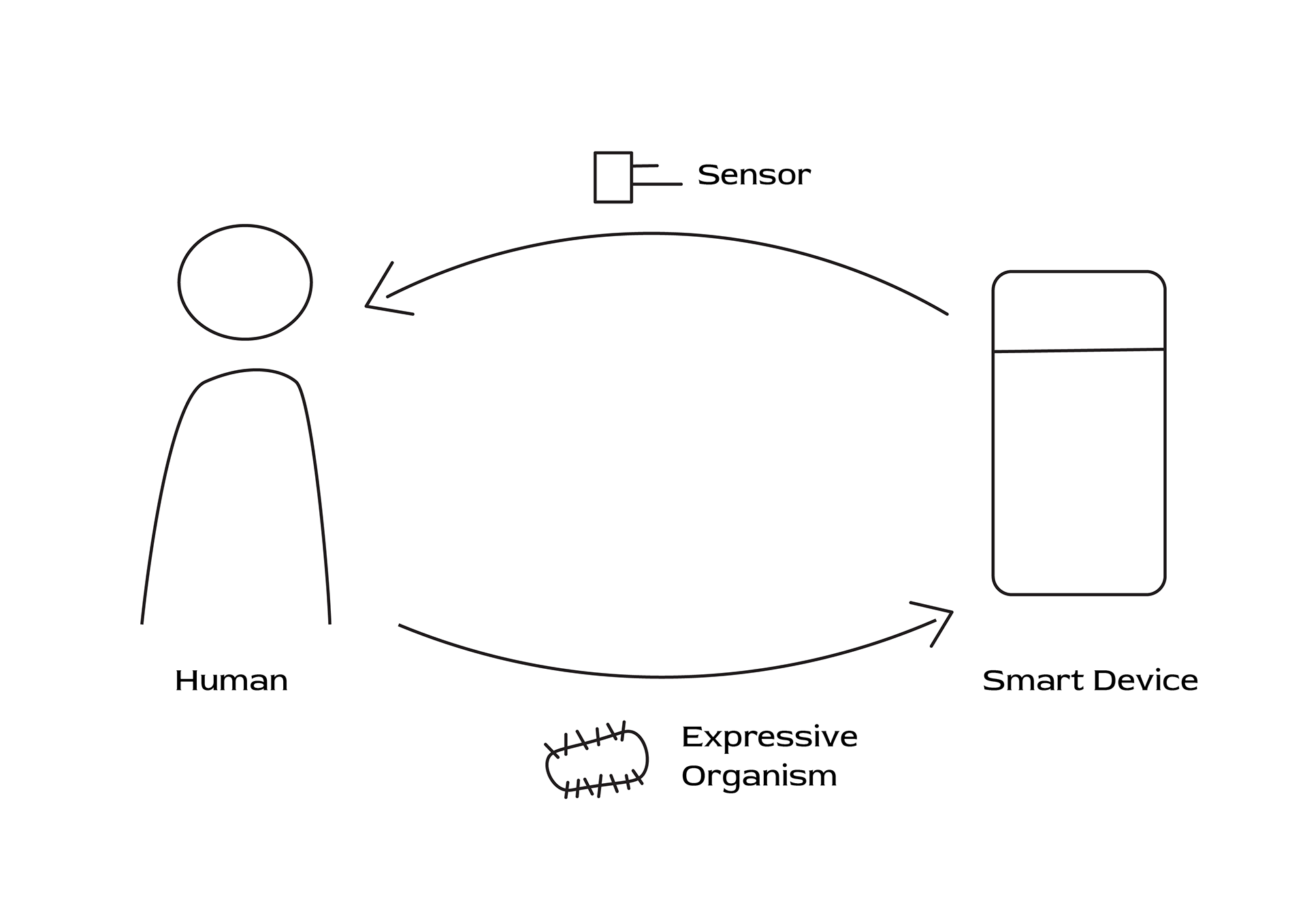
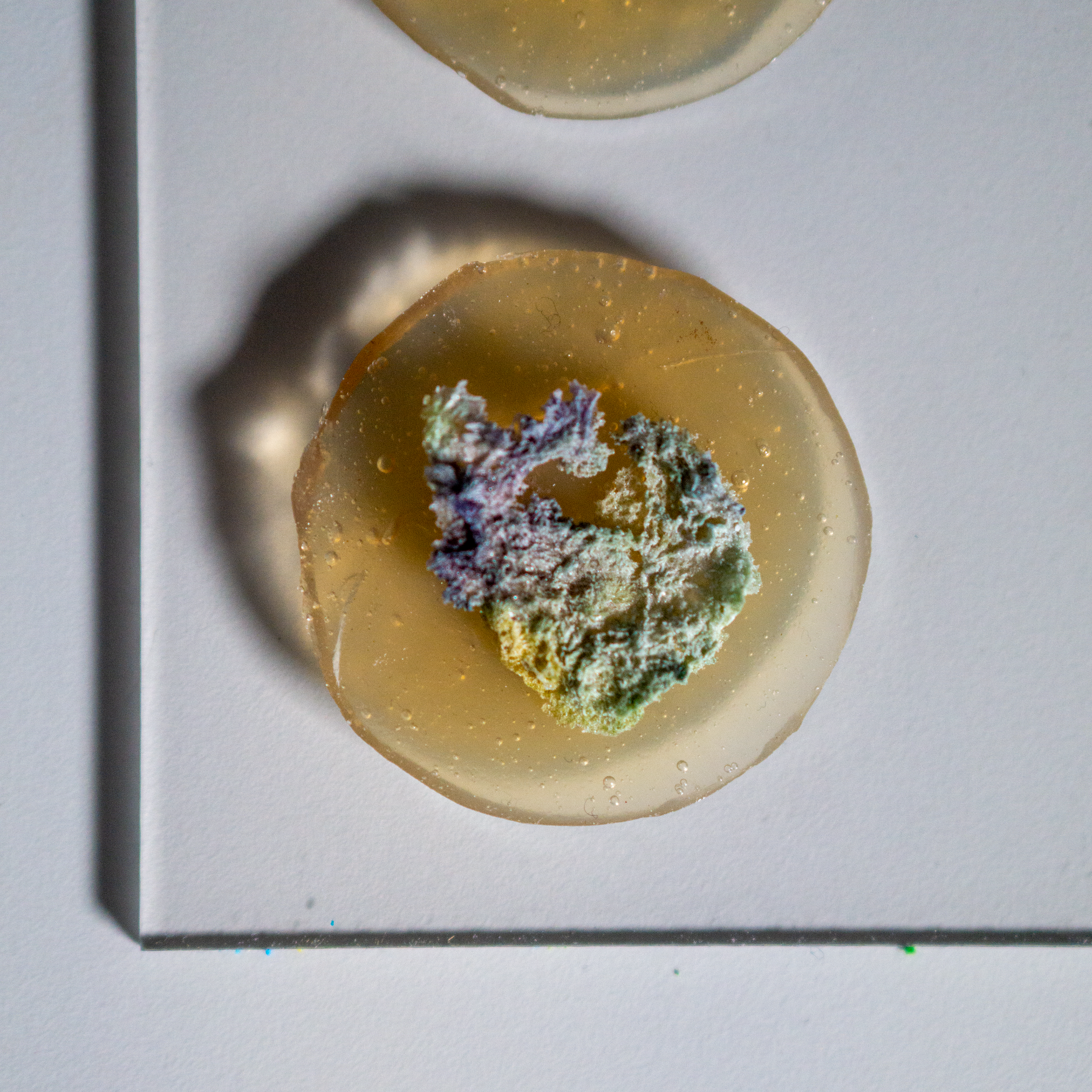

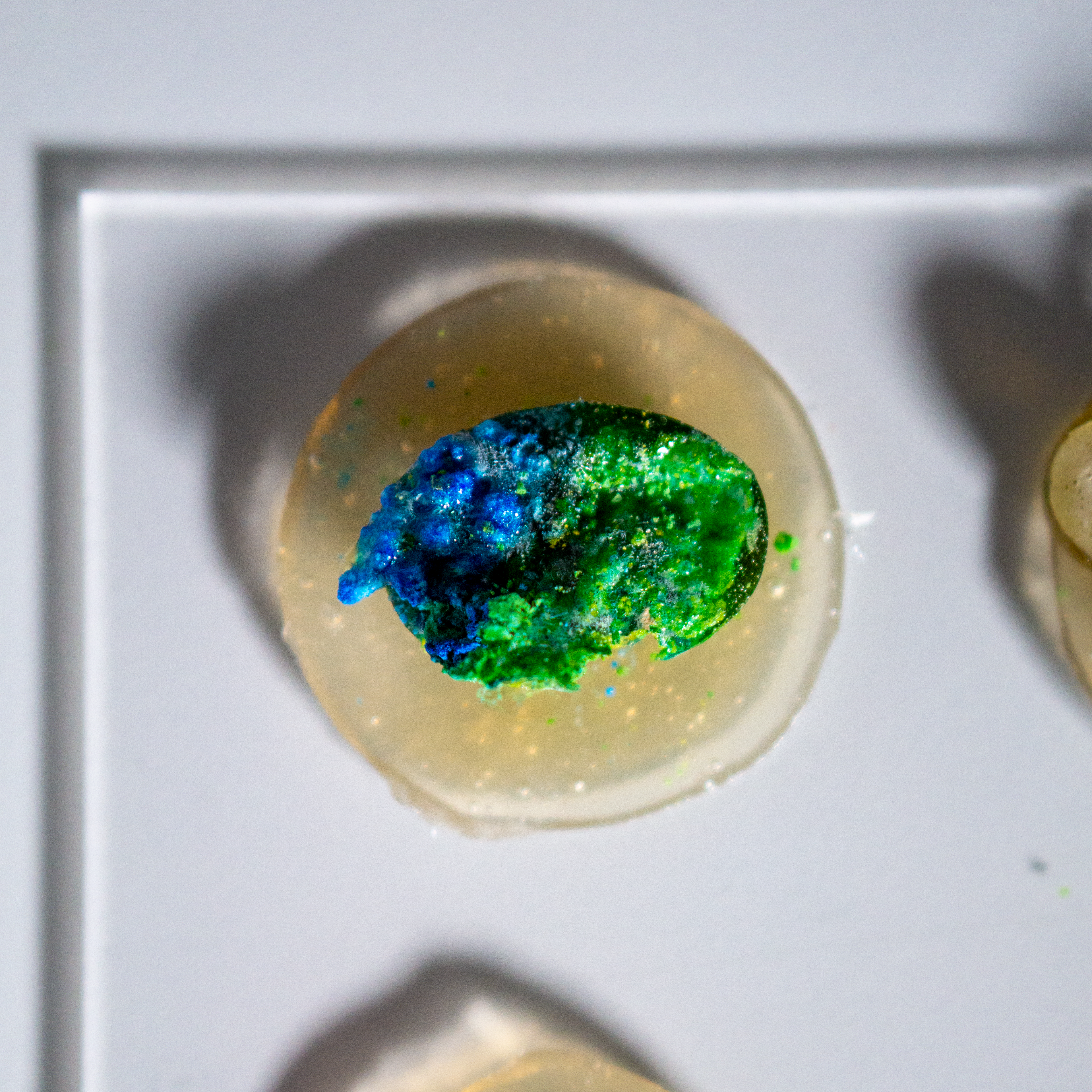

OLFi patches on agar agar bio-plastic.
Reflection
Organic user experiences
Imagining future possibilities
Novel material expressions can be a tool to start conversations, and spark the imagination of both collabors and potential users. Something that is especially useful for exploring future possibilities for interaction design.
Process
Organic materials, and living beings are messy and difficult to control...
... in stark contrast to the materials usually encountered in interaction design.
Designing with biology
Concept development
Can microorganisms be employed (/ used/ lived with/ embraced) to visualize information? This was the groups first enquiry facing the BioDesign Challenge.
To explore this we went through a series of iterative steps, before finalizing the concept.
Exploration

Gelatin based bioplastic
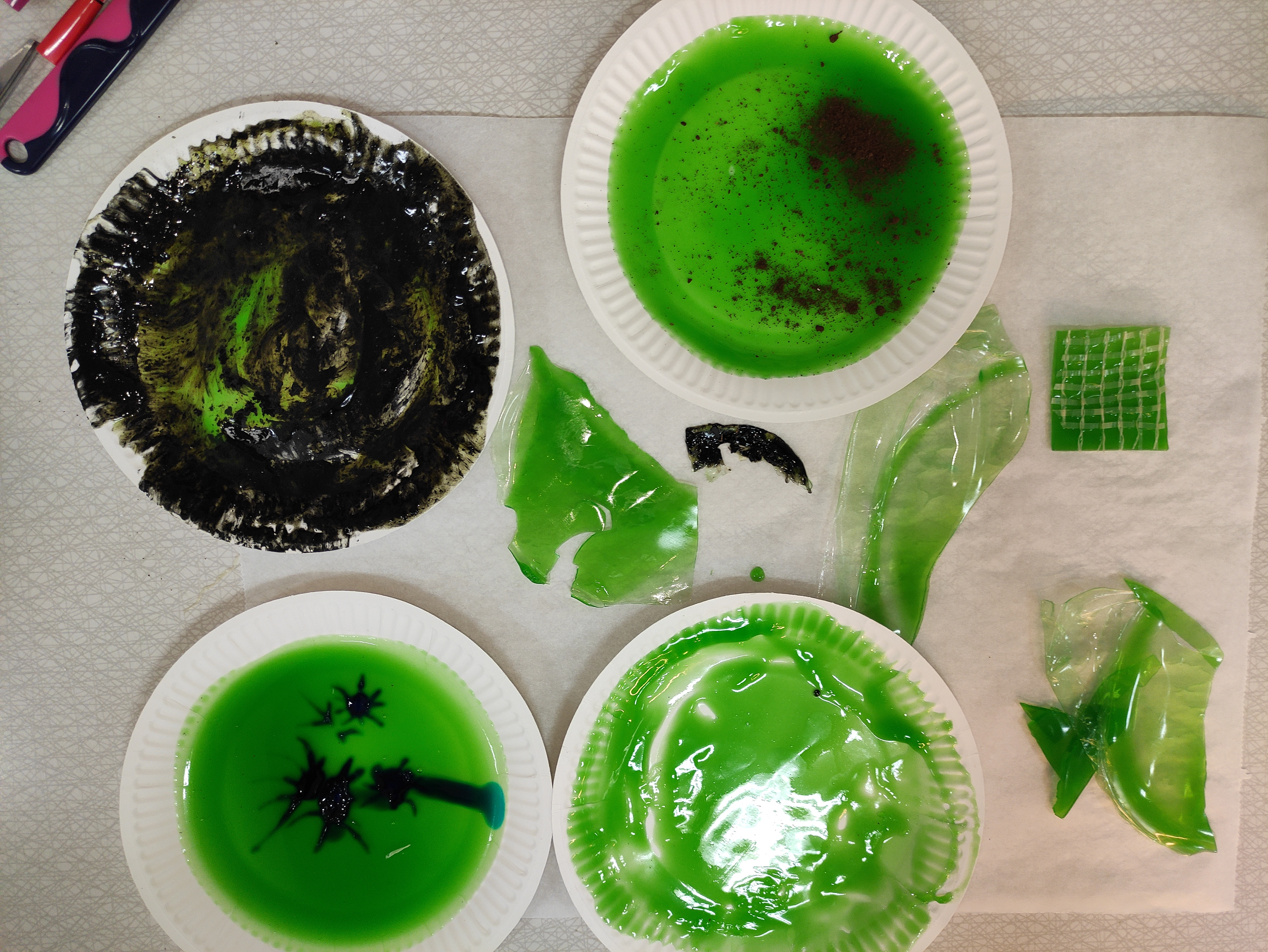
Agar agar based bioplastic and food colouring
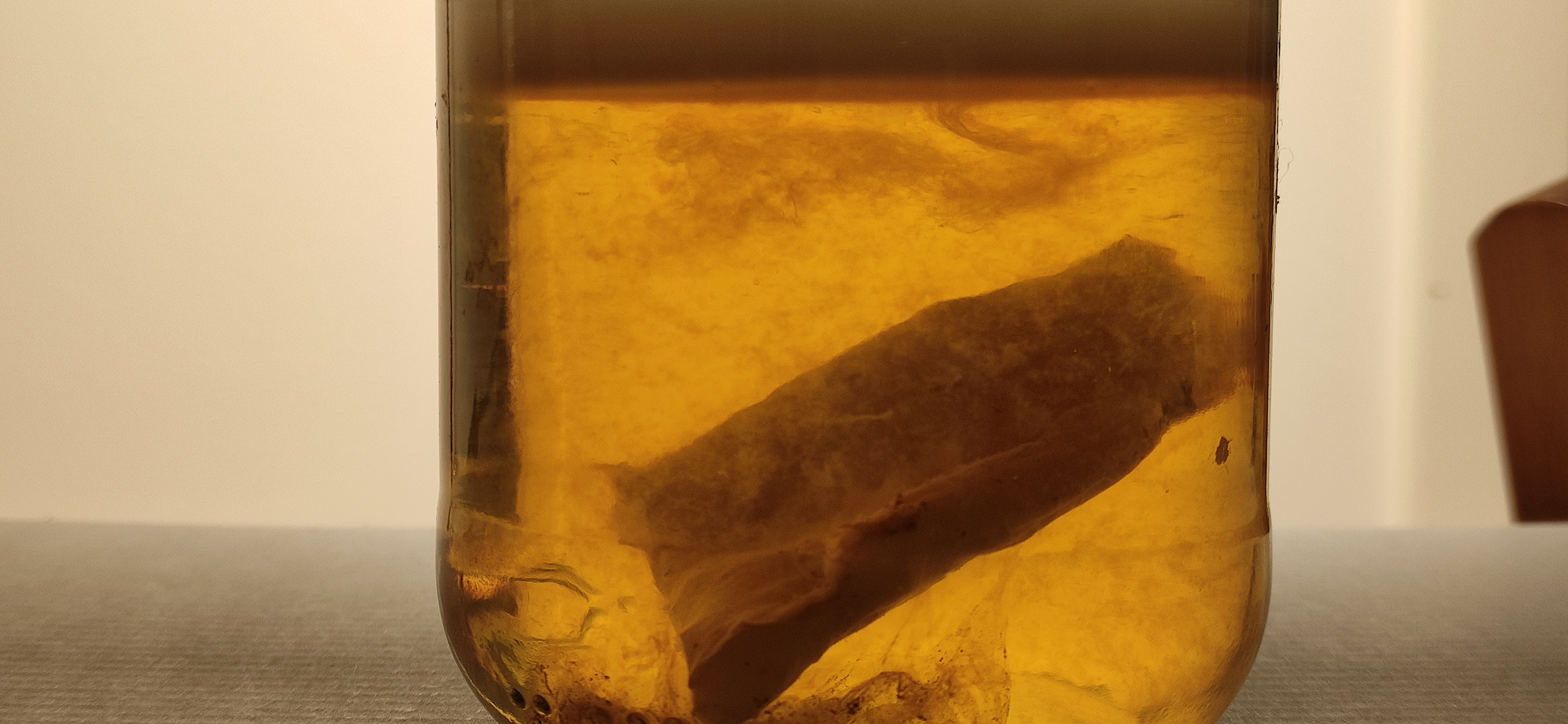
Kombucha SCOBY

Provocative material probe
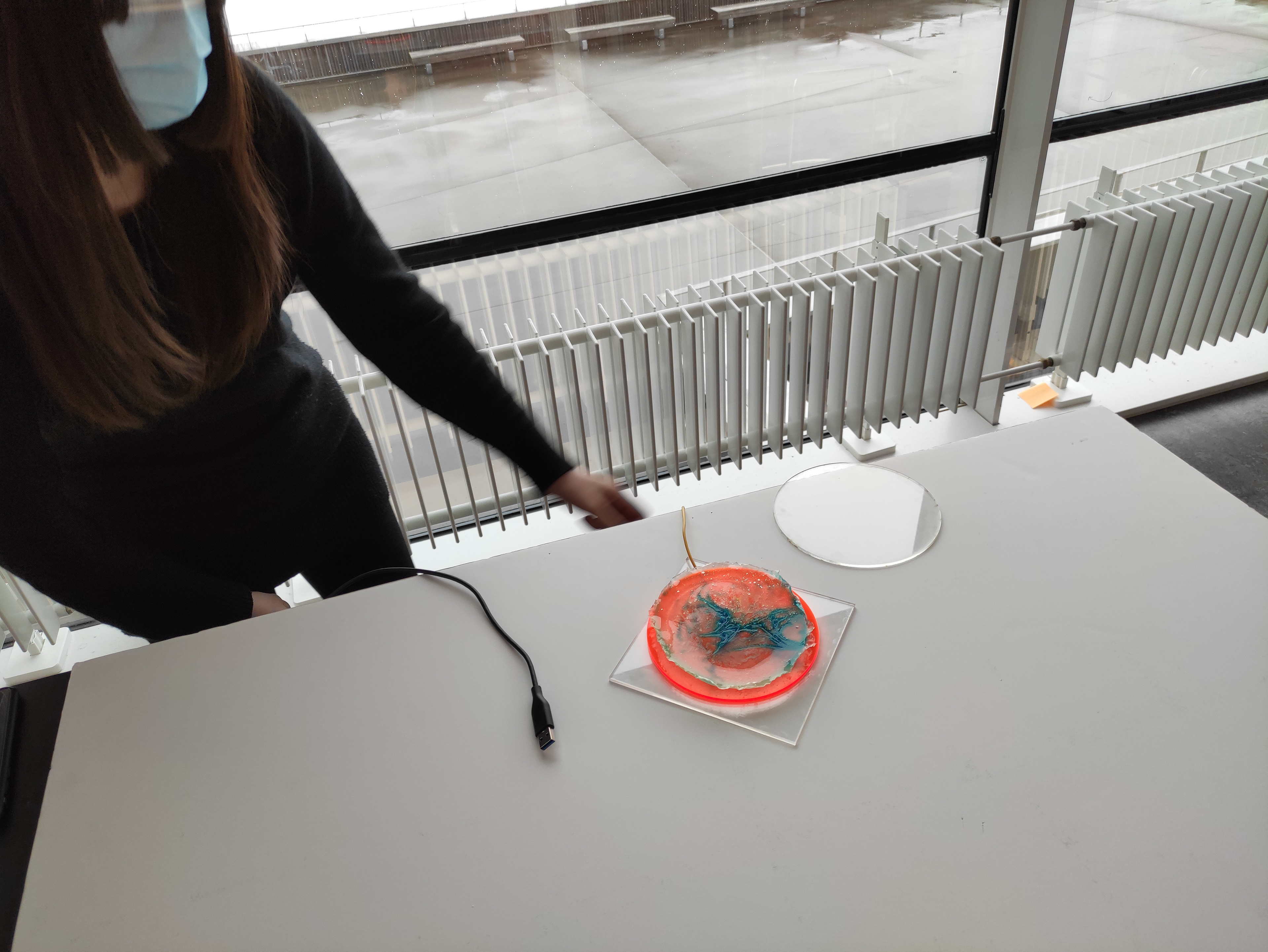
Provocative material probe
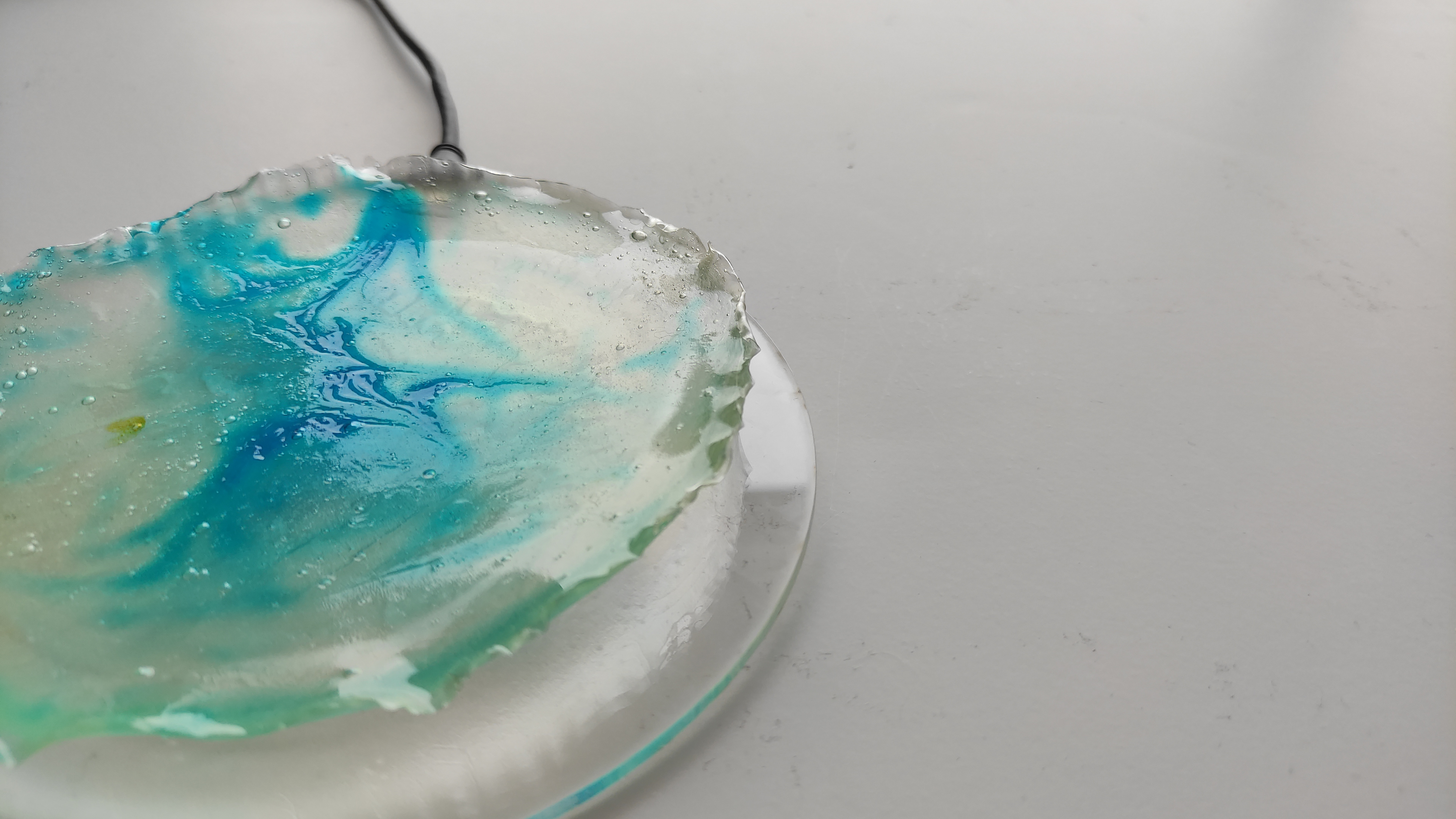
Provocative material probe
Bioplastics exploration and provocative probe/ sacrificial prototype.
Bio-material explorations
Kitchen/ Lab
Starting in the school kitchen turned bio-material lab, we explored the properties of different bioplastics, as well as the living matter of kombucha SCOBY.
We focused on organic processes of growth and decay, visual and tactile change of the different materials and organisms.
The materials were then used as provocative probes in co-creative sessions, and to gather potential user responses to our ideas.
Co-creation
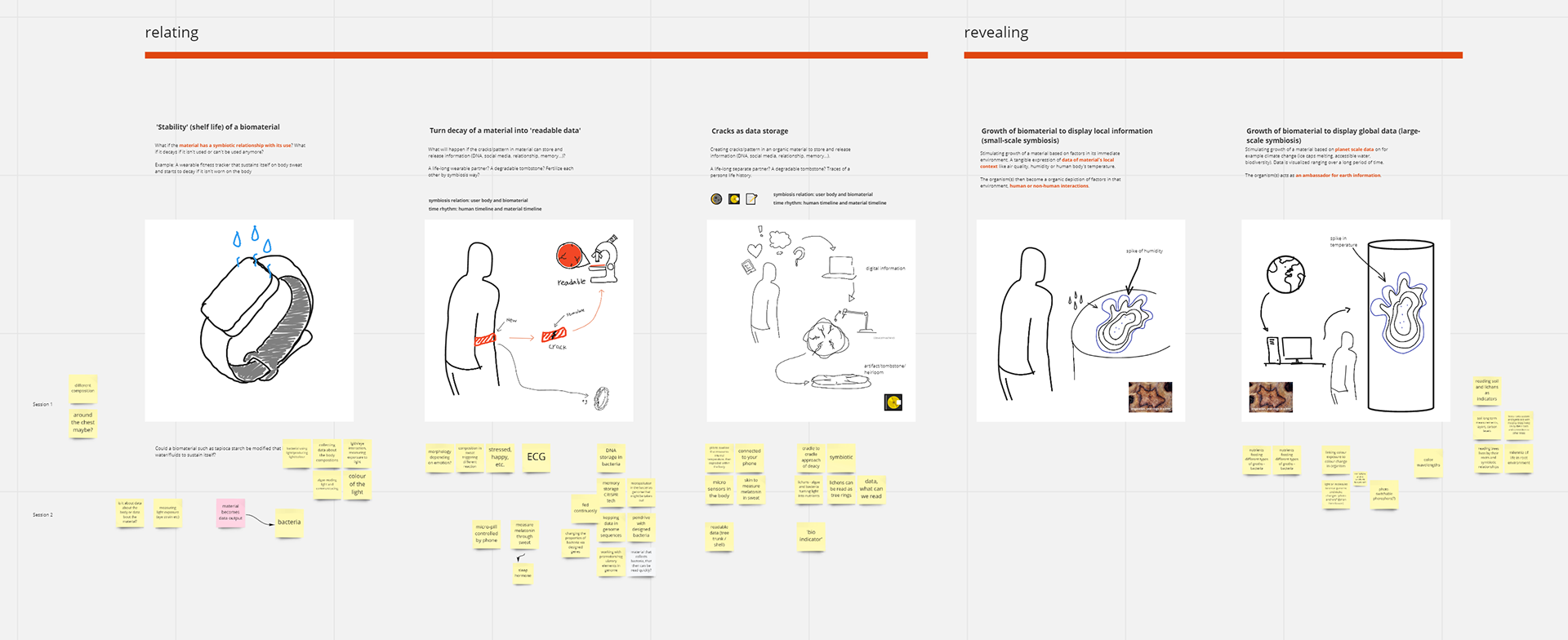
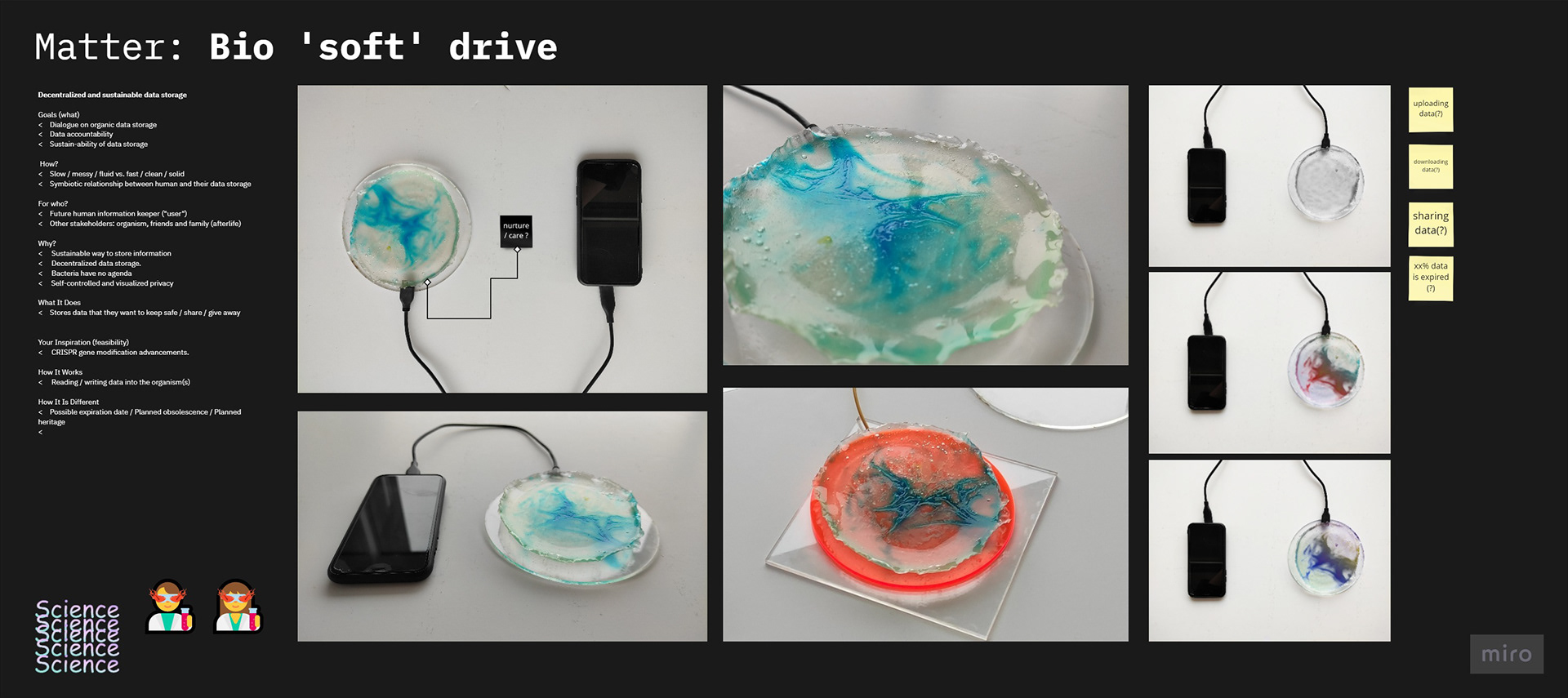
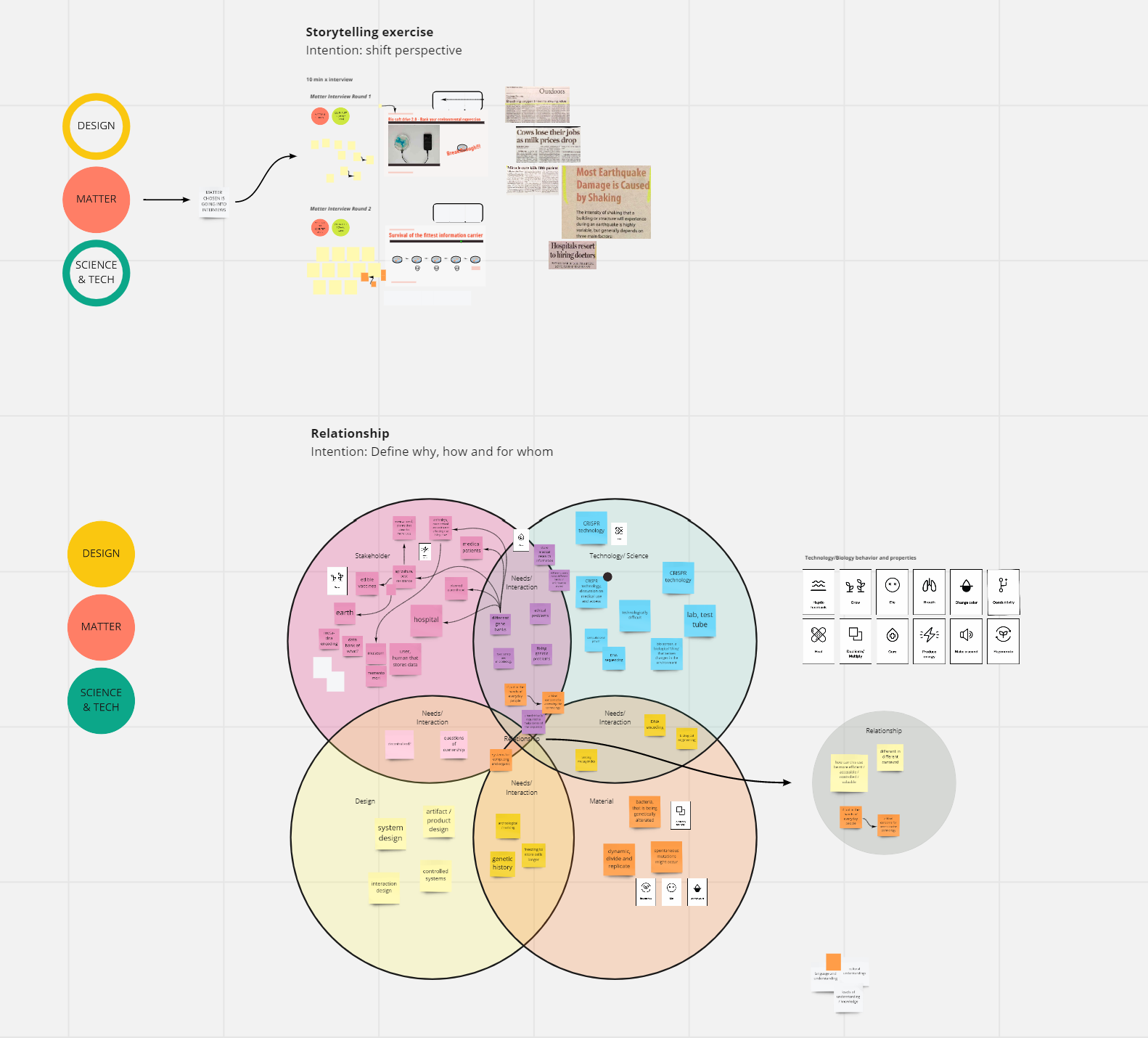

Online workshop material.
I helped facilitate the dialogue and guide our scientists through the workshop.
I helped facilitate the dialogue and guide our scientists through the workshop.
Co-creation sessions with biologists
What can synthetic biology do?
In two sessions with researchers of the Department of Molecular Biology at Umeå University, we explored ideas around the possibilities offered by synthetic biology.
Ideating around our first sketch ideas and sacrificial prototypes, and the provocative material probe, we collaboratively speculated on future possibilities and controversies of synthetic biology.
user reserch
What would it mean to give interactions with technology more organic and ambiguous qualities?
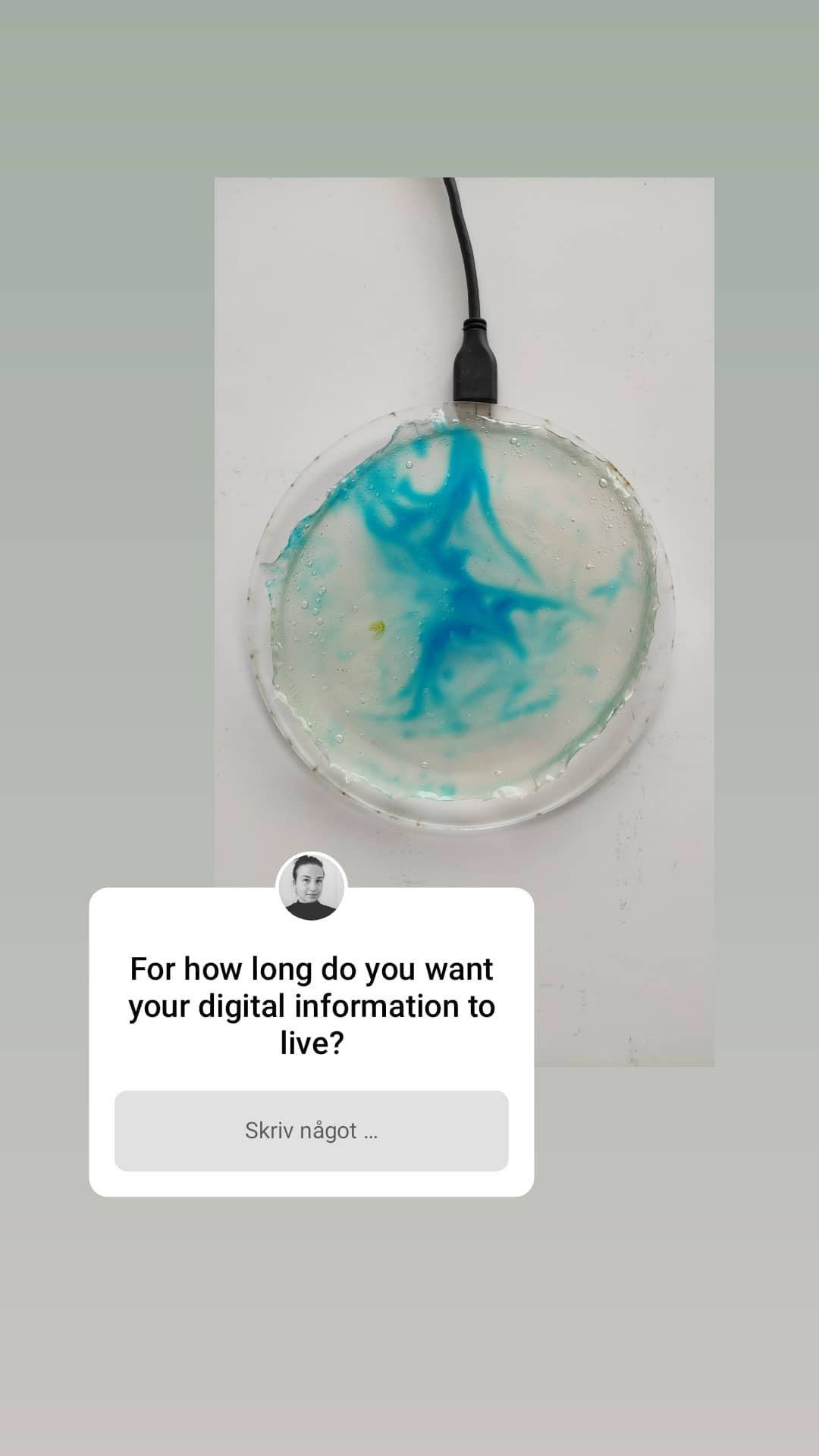
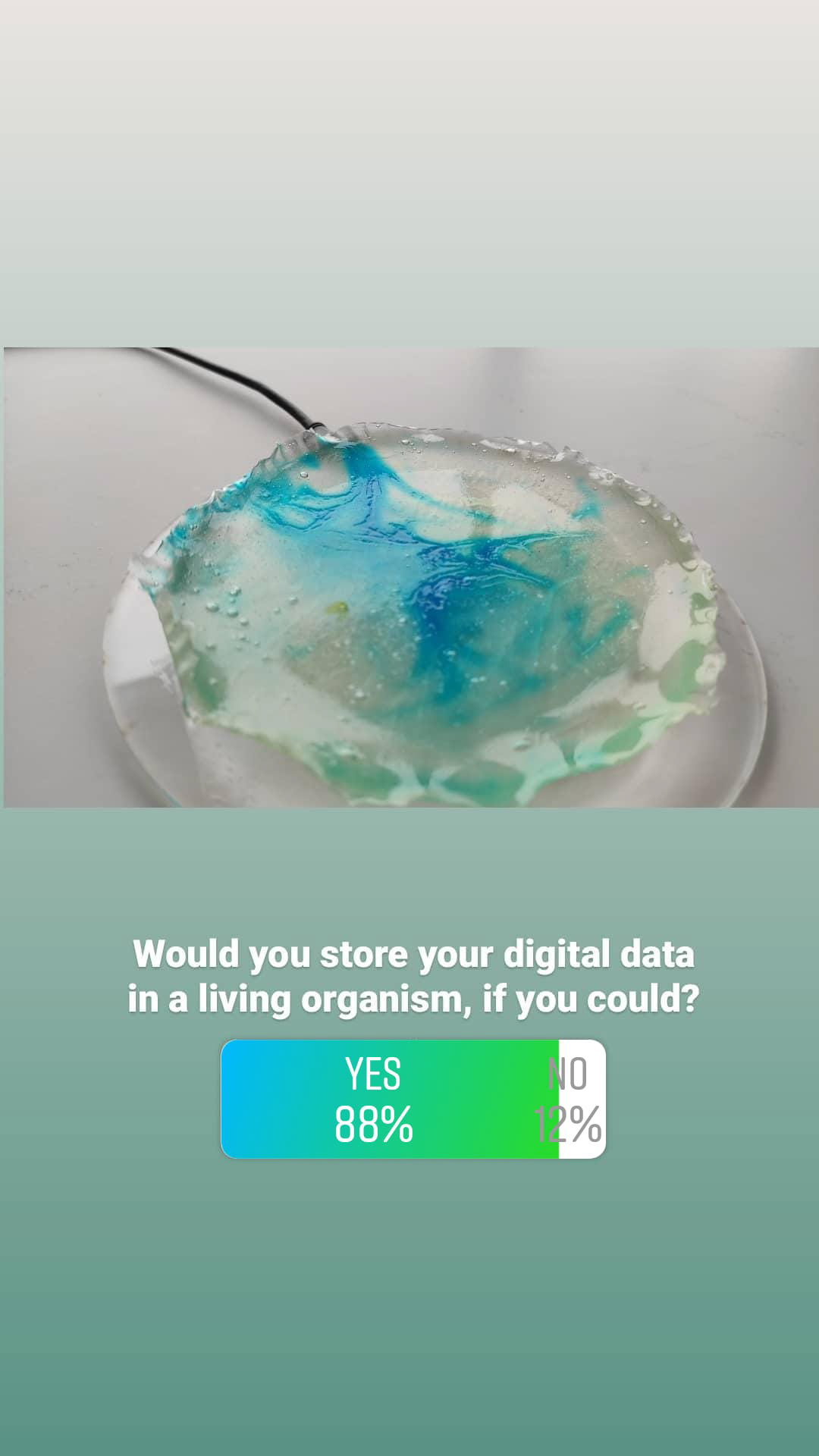
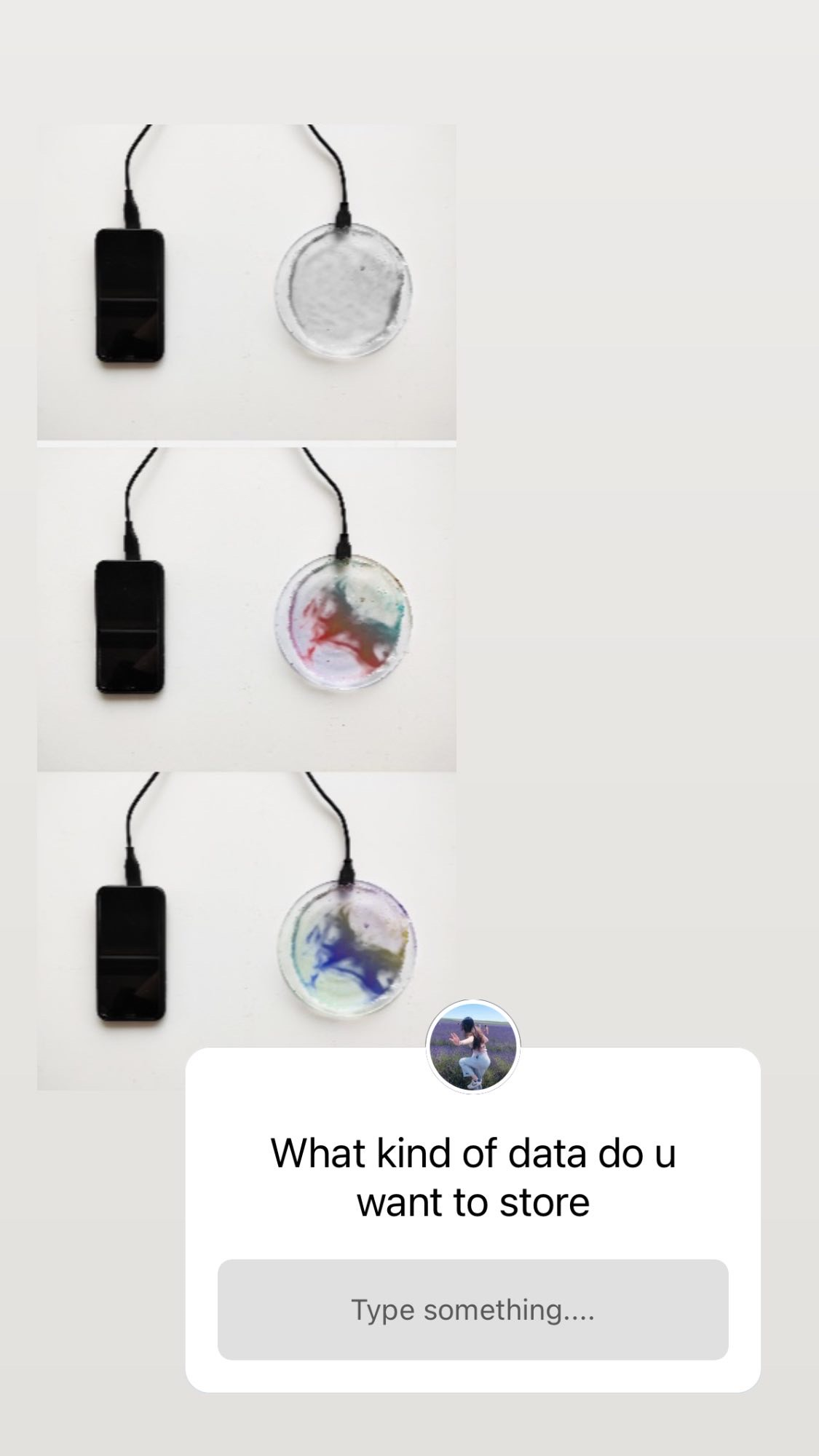
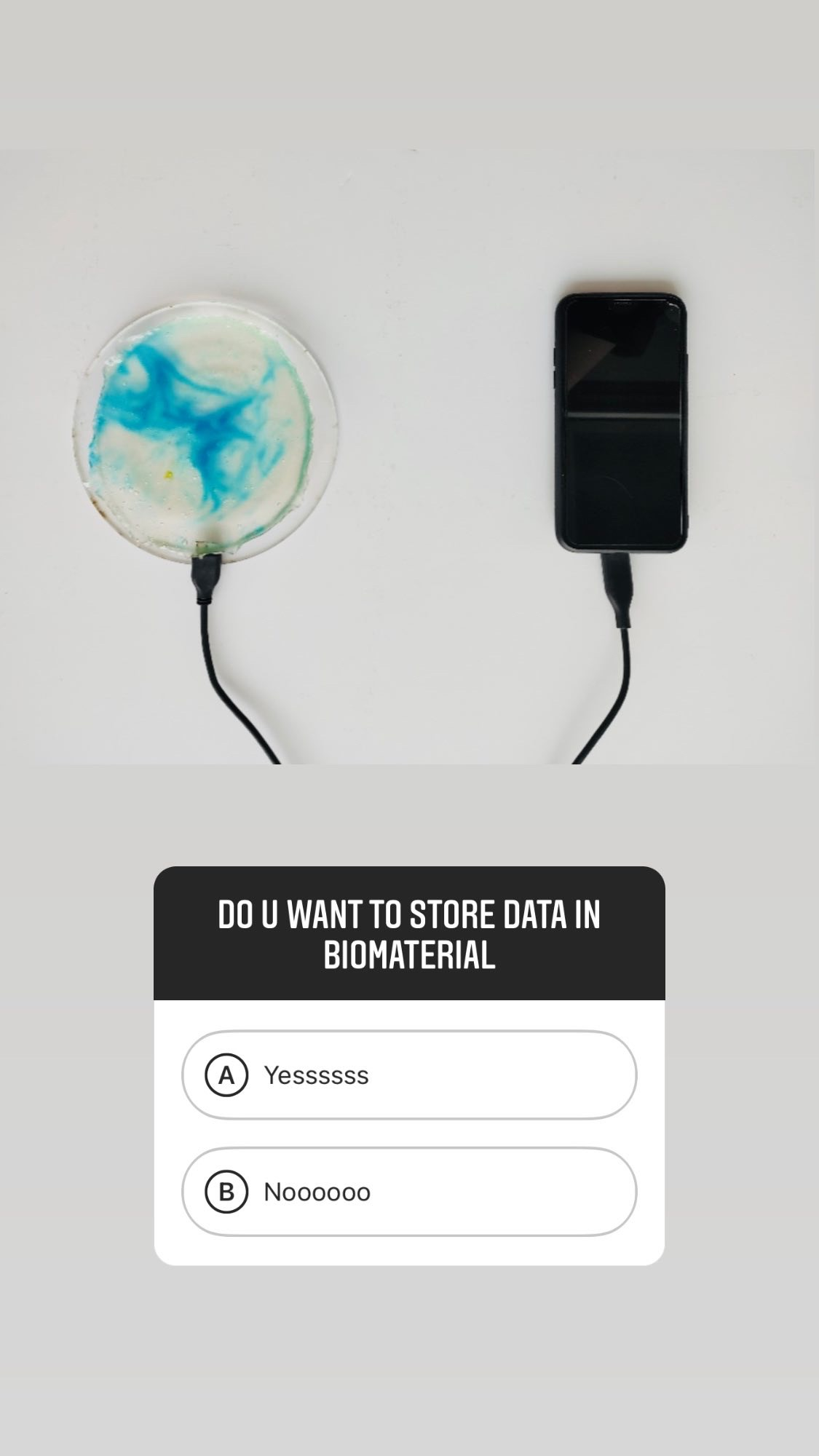

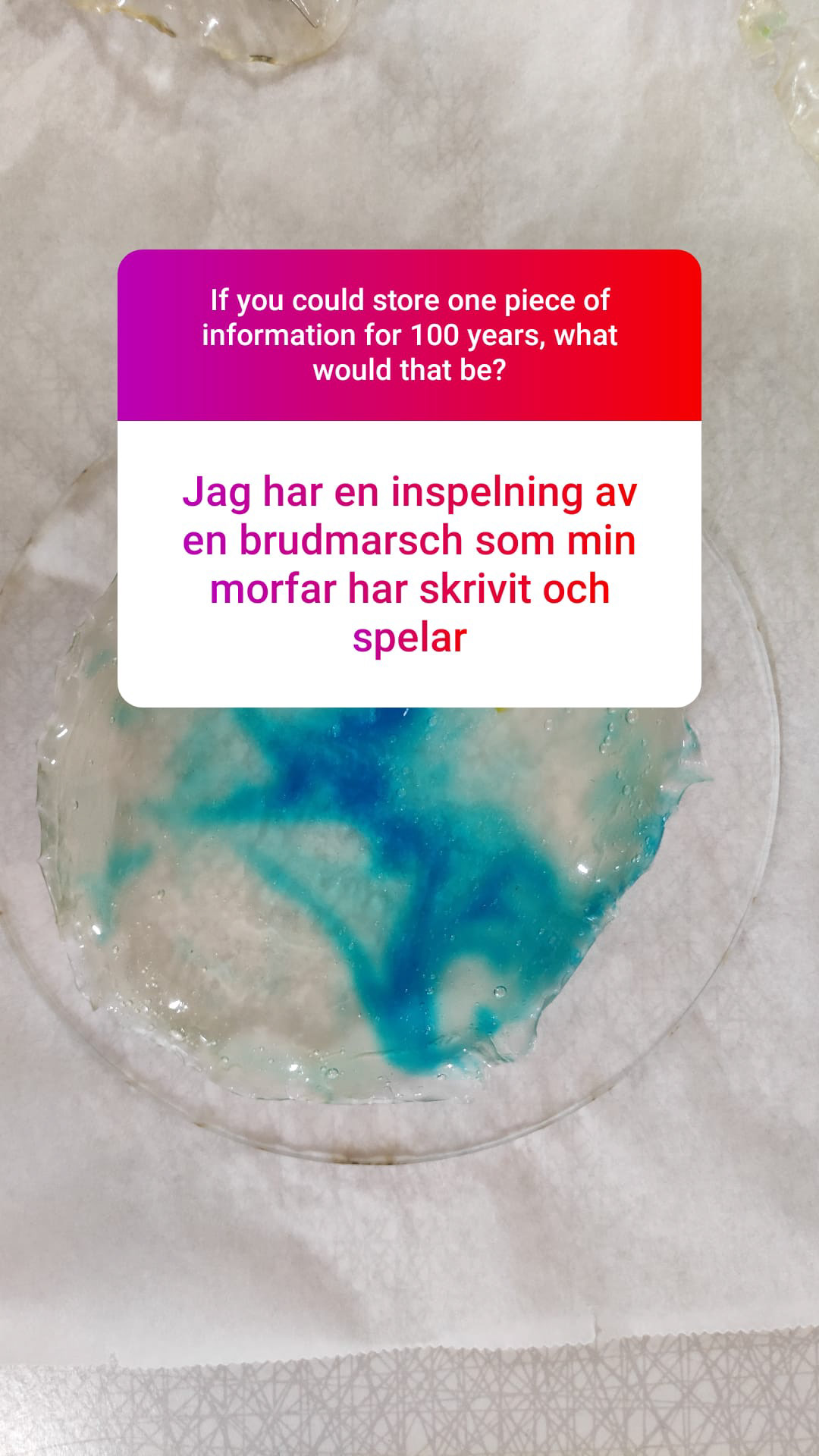

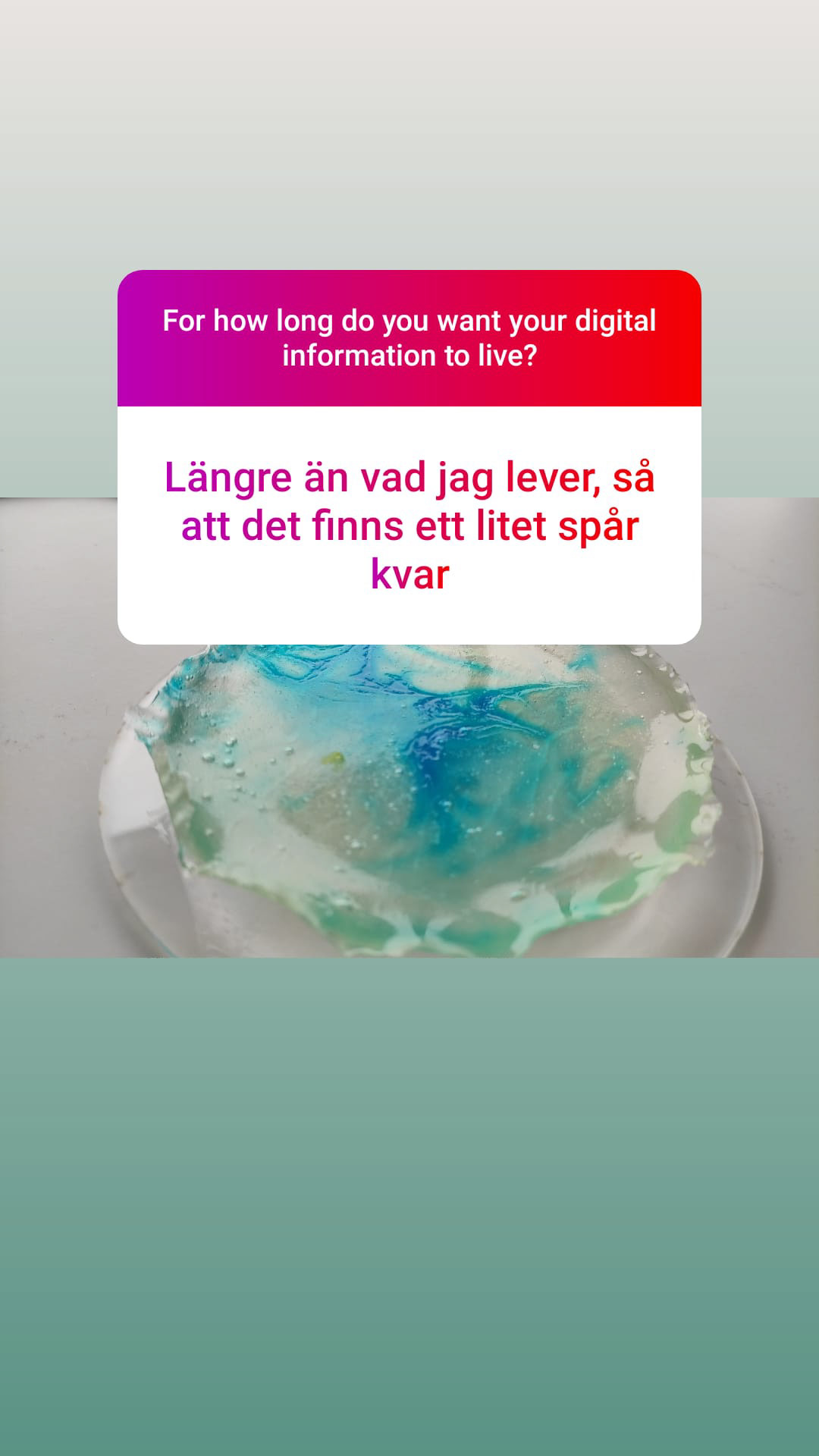




Provocative probe responses.
Provocative probe
What if your data was alive?
At this point in the process we wanted to know how people relate to the idea of using organic matter to store data .
Bringing living beings into the picture seemed to make people think of their data in a more personal, sentimental, and reflective way.
desktop research
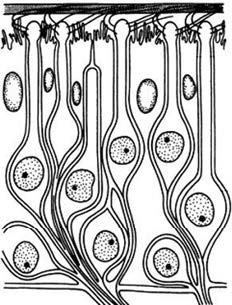
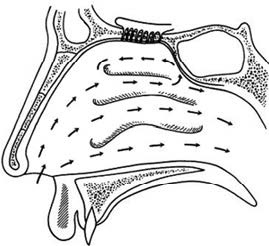

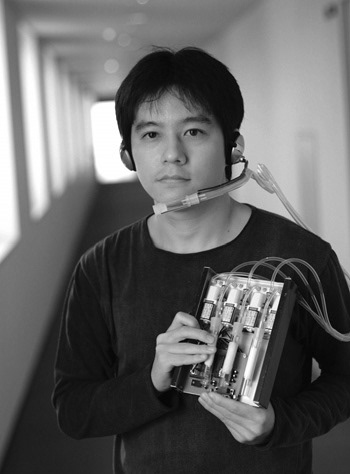


Olfactory interfaces of the past.
Kortum, P.(2008). HCI beyond the GUI : design for haptic, speech, olfactory and other nontraditional interfaces (1st edition). Elsevier/Morgan Kaufmann.
Kortum, P.(2008). HCI beyond the GUI : design for haptic, speech, olfactory and other nontraditional interfaces (1st edition). Elsevier/Morgan Kaufmann.
Olfaction
/ɒlˈfakʃ(ə)n/
/ɒlˈfakʃ(ə)n/
The sense of smell
Realizing that we had not yet considered smell as a property of our bio-materials we looked at the use of olfactory interfaces in the field of interaction design.
While it can be used to augment the user experience in many different cases, there are still some difficulties of controlling and recreating specific smells.
Inspiring matter: SCOBY, a symbiotic culture of bacteria and yeast with a very characteristic smell.
Olfaction and synthetic biology
Trends of the industry
Within the field of synthetic biology, recent developments have shown that yeast can be genetically modified to produce most naturally occuring smells.
"Rose oil derived from genetically engineered yeast has all the complexity and nuance of the real thing."
- Liz Stinson, WIRED, 2015
- Liz Stinson, WIRED, 2015
Currently this science can be applied commercially for scents and flavours. However, looking to the future, how could this type of synthetic biology augment our interaction with technology?
Crafting olfi
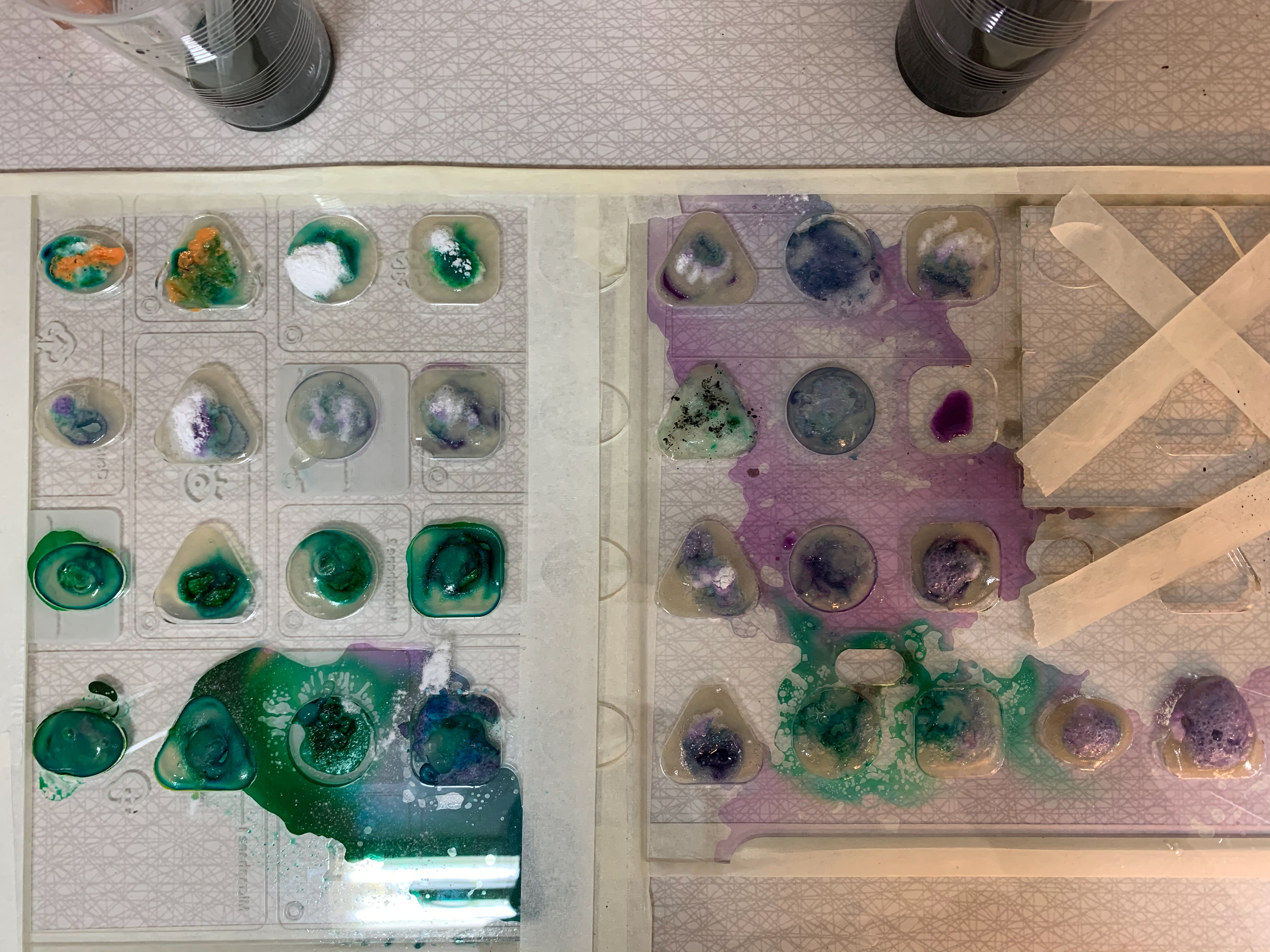


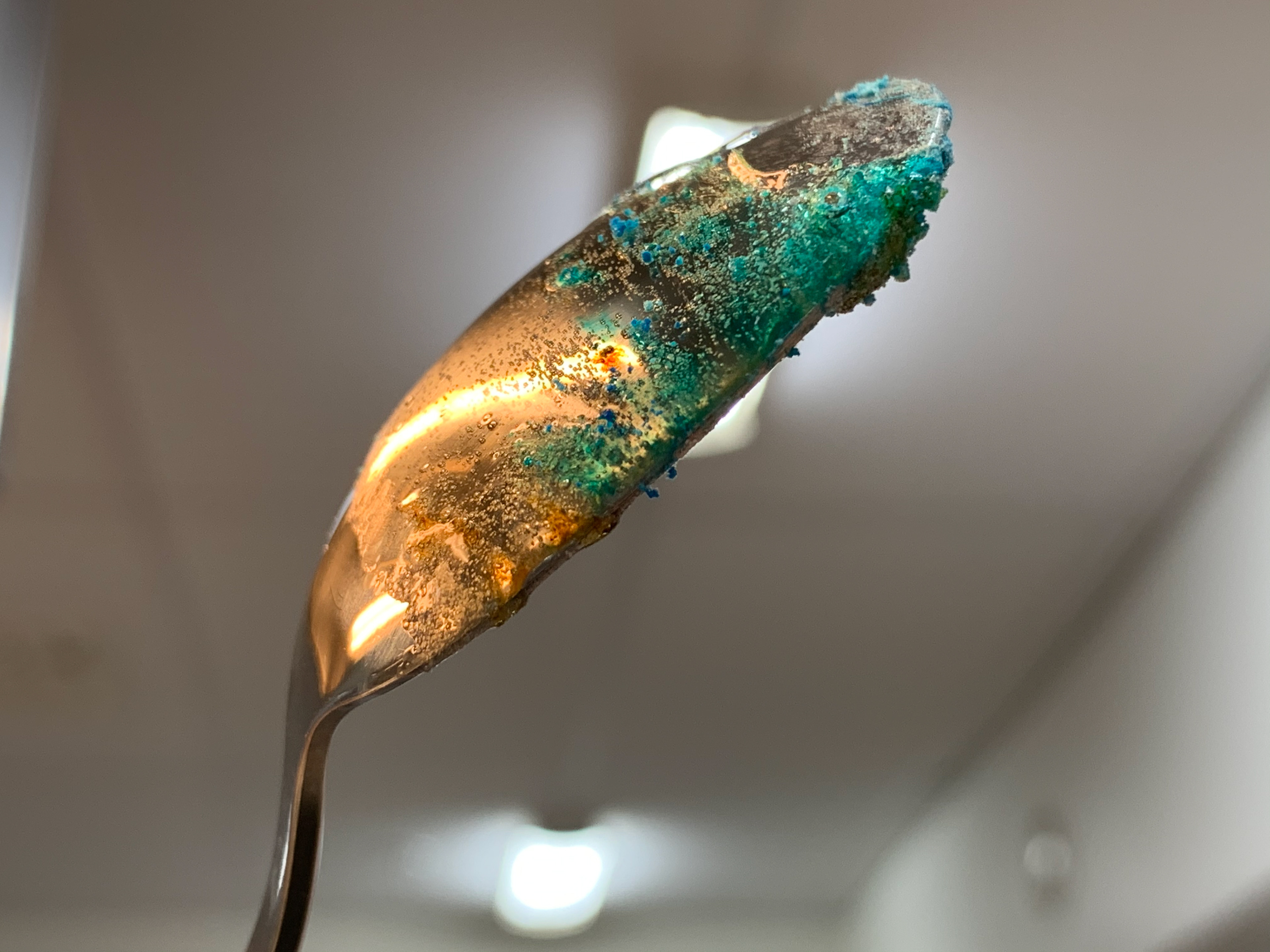

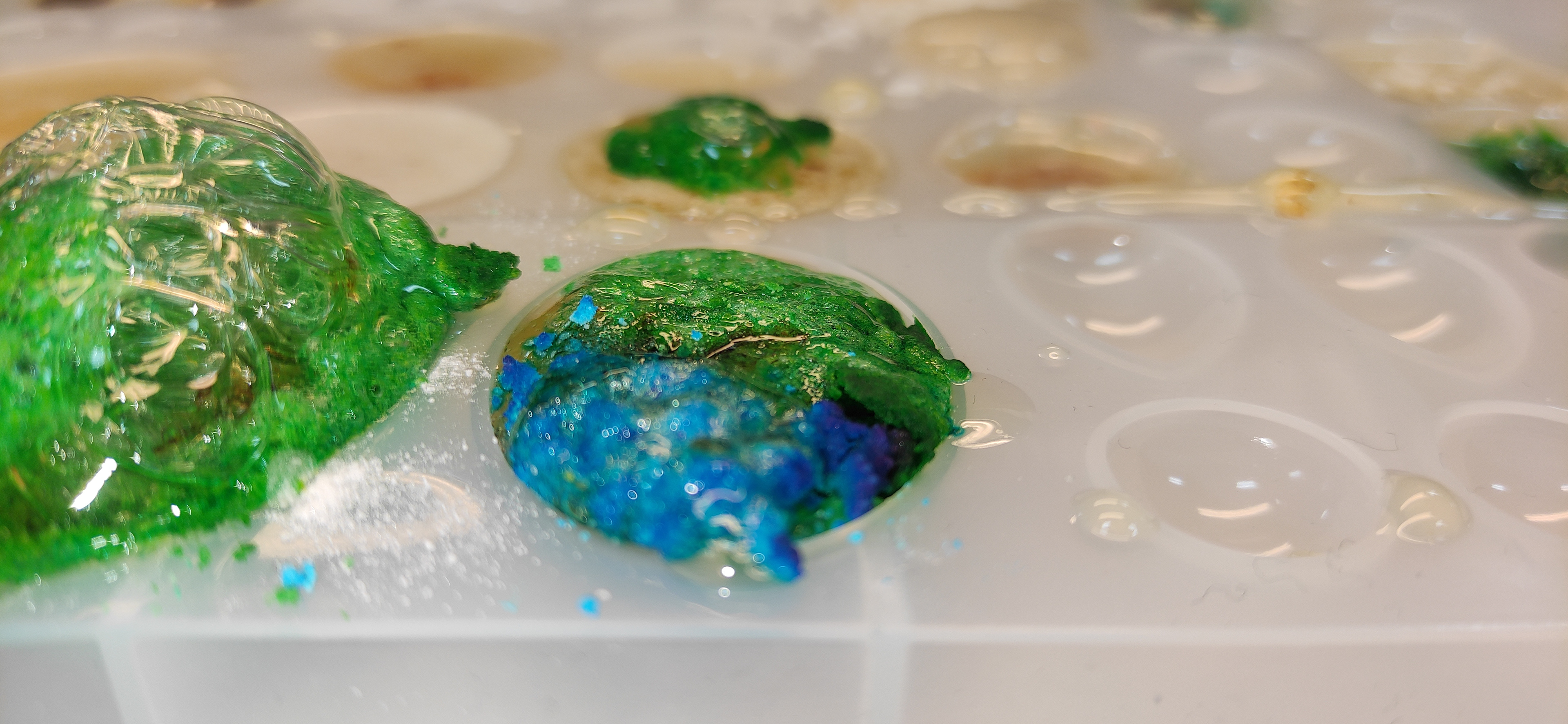
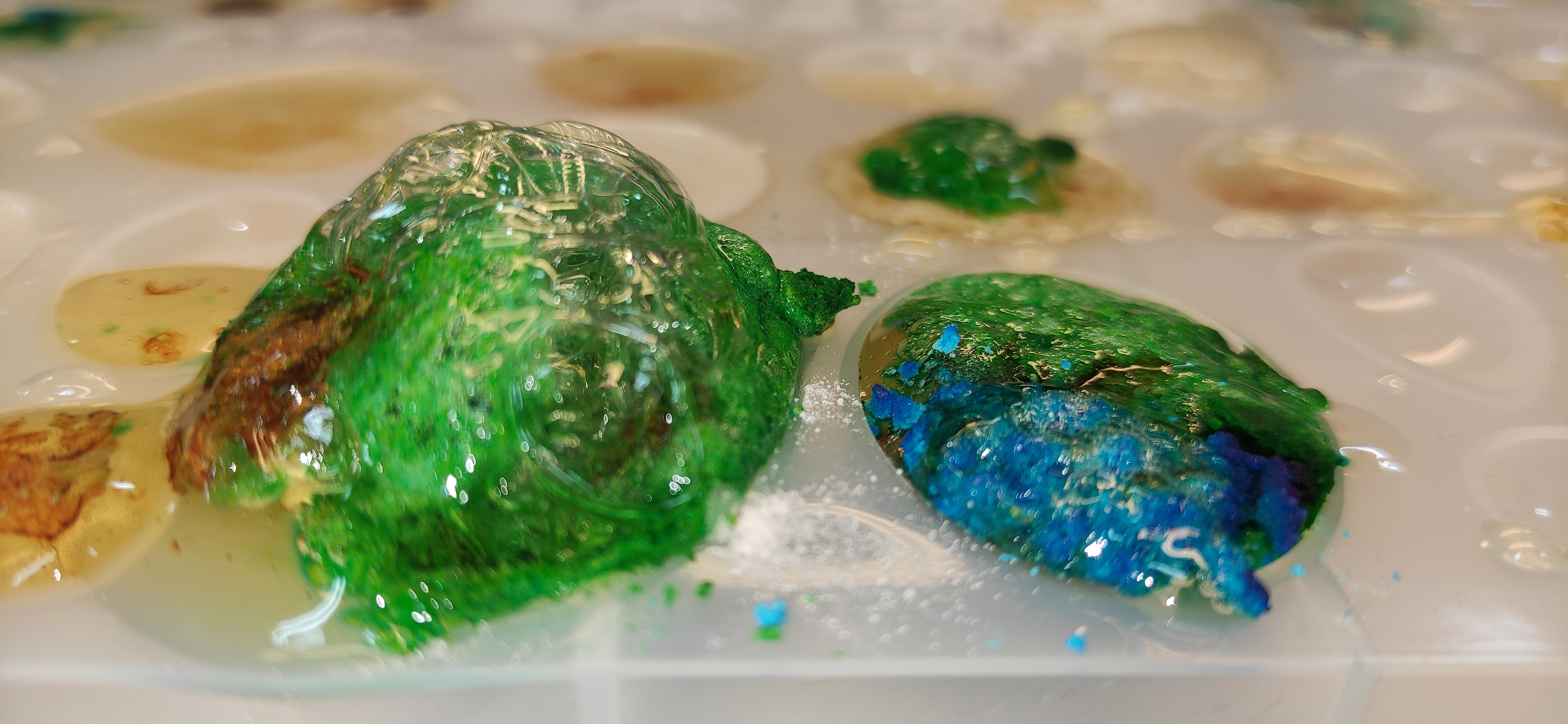

Purposedriven material explorations: biomimicry of symbiotic microbes, using bioplastics, food colouring and baking soda.
Concept formulation
Bio-Olfactory UX design
Inspired by our findings on olfactory interfaces and synthetic biology, we speculated on the possibilities offered by genetically engineered symbiotic cultures of microbes. Organisms coded to produce smell as a reaction to electronic activity.
Could they offer an organic form of expression that today's devices lack?
What if Amazon's Alexa had a body odour?


